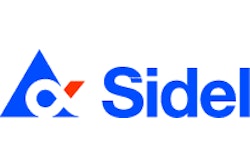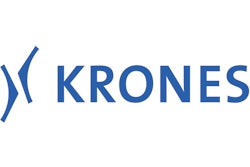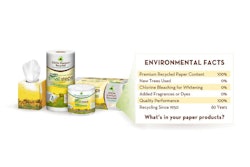Krones has also been active in this “dry aseptics” technology, whose chief benefits are cost savings, reduction in water usage, and a better position where sustainable packaging is concerned. What’s interesting is how different the Krones and Sidel approaches are. Both depend on hydrogen peroxide in a vaporized or gaseous state. But the Sidel technology, called Predis, sterilizes preforms before they are blown into bottles. Krones’ PET-Asept-D technology, on the other hand, sterilizes fully blown bottles. A 35% concentration of liquid hydrogen peroxide is dosed onto a hot aluminum plate in a hydrogen peroxide evaporation chamber. Sterile hot air flows through the evaporator and the evaporated hydrogen peroxide is absorbed by the air. Nozzles then deliver the hydrogen peroxide into pre-warmed bottles. Bottles are then flushed with hot air, flushed with cold air, filled, and capped. The treatment prior to filling, says Krones, takes just under 14 seconds.
As near as I can tell, no dry aseptic installations exist in the U.S. Apparently, the FDA frowns on such methods. But Krones says its dry aseptic technology has been in commercial use outside of the U.S. since 2005. A recent installation is at Agrozumos (a subsidiary of Germany’s Riha Group), located in the northern Spanish town of Lekunberri. A more traditional aseptic line, where liquid paracetic acid or liquid hydrogen peroxide are used as the sterilizing medium and then rinsed out with water, was not possible because it would have produced more liquid waste discharge than the plant can handle. According to Christian Theis, managing director of operations at Agrozumos, “We would in fact just about have managed to cope with a wet-aseptic line, but then we would have had to close the door on any future capacity upsizing.” The new line at Agrozumos is used to run three sizes. The 0.33-L bottle runs at 25,000/hr. Both 1-L and 1.5-L sizes run at 18,000 containers an hour. The products are juices for both own-brand products as well as for contract filling customers like Eckes-Granini.
I think U.S. consumers and beverage manufacturers alike are shortchanged by the FDA’s unwillingness to allow technologies like these into the U.S. Consumers lose out on the unique combination of taste, nutrient retention, and convenience that aseptic packaging like this offers. And beverage manufacturers lose out because they’re denied an opportunity to operate more sustainably by greatly reducing waste water effluents and cutting back on energy spent on refrigerated storage and distribution. Is it time FDA took another look at dry aseptics?































